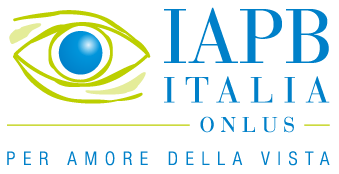“How we learn to see” is the title of the workshop that Dr. Daniela Ricci, pediatric neurologist of the National Center on low vision and vision rehabilitation, and her team will hold in Rome on 14-15 February 2020. The event will be an opportunity to illustrate a whole sector of vision rehabilitation: low vision in childhood, its causes, and the chances of recovery offered by spontaneous or induced brain plasticity in the first months of life.
“Eyesight plays a pivotal role in child development from birth, both for motor and interpersonal skills”, Dr. Ricci explains. “Early diagnosis of any vision problem is therefore crucial for timely treatment so that a child may develop their full potential”. The National Center for Vision Rehabilitation, where Dr. Ricci works as a pediatric neurologist, treats approximately 800 visually impaired children every year.
Many of these children have a surprising recovery ability, even in the case of severe brain damage, because around the end of pregnancy, brain plasticity in newborns is higher. “This means,” Dr. Ricci clarifies “that when damage occurs during the neonatal period, the adjacent areas of the brain, which are still intact, perform the functions that are recognized as essential. This spontaneous plastic ability is at its peak in early infancy, although recent studies have shown that ‘induced’ plasticity during rehabilitation can improve vision performance at all ages”.
“Vision problems can stem from very different causes, some severe, others less so. However none of them should be ignored and the assessment of visual skills must be conducted from the first days of life, when risks may be present. In the case of eye diseases, vision problems may not be immediately evident, however, orthoptic and ophthalmological examinations can be performed from the first months of life. On the contrary, in some brain pathologies, vision problems may be the first sign to emerge, in the form of poor attention or poor ability to fixate or follow a toy. In both cases, a possible vision problem should be taken into consideration and its cause should be investigated. The earlier the diagnosis is made – and the earlier the intervention is performed – the greater the recovery of the child and the development of their potential”.
This is the scope of the workshop “HOW WE LEARN TO SEE – Early neuro-visual assessment and rehabilitation”, which will be held in Rome on 14-15 February 2020.
“The event caters to different healthcare professional categories”, explains Dr. Ricci, who is the organizer. “The aim is to summarize the most important information on how to detect visual problems, which exams must be performed in the early stages and what kinds of intervention should be carried out to promote the development of a child’s visual and psychomotor skills”.
Dr. Ricci, what is the incidence of low vision in children, and what are the causes?
“Unfortunately, we don’t have reliable data regarding children in Italy. According to the ISTAT report “Health conditions and use of health services in Italy and the European Union”, one third of elderly people suffer from at least moderate visual limitations, which amounts to 4.5 million people. Two out of a hundred people aged 15 and over, suffer from severe visual limitations, a percentage that rises to 5.4 among the over 65, and to 8.6 among the over 75. There is no reliable data for subjects under the age of 15. However, we can say that since 70 percent of children with a motor problem, which is the consequence of brain lesions, can be affected by an associated vision deficit, at least two children out of 1000, who are born alive every year, are at a high risk of developing a visual impairment. Children with eye pathologies must be added to that figure”.
What does the rehabilitation path consist of?
“Play is always the basic underlying activity. Our core task is to help children use their sight and find it interesting, so that exercises and efforts, combined with the brain’s ability to replace damaged neurons with intact ones from adjacent areas, encourage the development of visual skills to their full potential. Since we have assessment protocols, that are standardized and easy to perform, which help us identify a vision issue from the neonatal period, we can start our observations also in the neonatal intensive care unit. The initial intervention, especially in the neonatal period, is often more centered on the parents. As soon as a diagnosis is made, parents can feel powerless and don’t know how they can help their little ones. Our task is to support parents in the early stages and help them understand that simple things – such as arranging indoor lighting, feeding, play and cuddling (by showing their faces in high-contrast, so that children may look at them) – help children become competent. In this way, we reinforce the child-parent relationship, which is always at risk in the presence of a sensory deficit, and help parents become more confident in their role as educators and more at ease with their children. Recovery possibilities at that age are very good, but interventions must be early and timely”.



